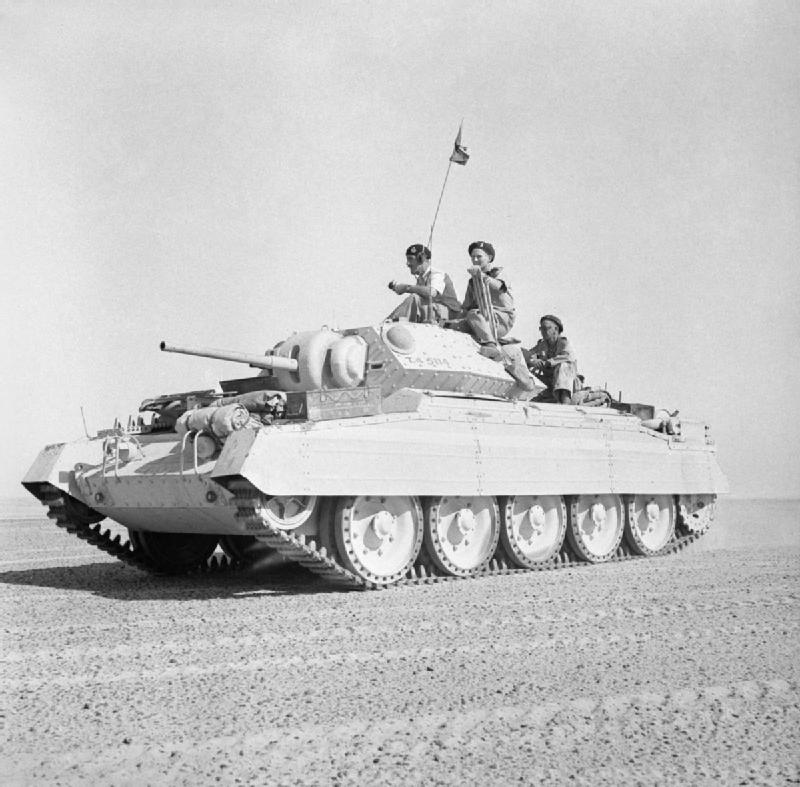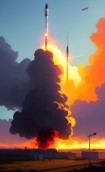|
TasogareNoKagi posted:Vaguely related but likely of interest to the thread anyways, have the owners manuals to a WW2-era US fleet submarine. The relevant portion I want to call out is the section on the propulsion control equipment. The site also hosts a lot of documents that would be of interest to the thread.
|
|
|
|

|
| # ? May 10, 2024 16:05 |
|
the brim on early modern helmets is still useful--at a reenactment i was at a while back, the guy just behind me got a piece of unburnt powder in his eye. when you know you're going to be fired at, bow your head!
|
|
|
|
Nebakenezzer posted:I might be able to help; what's less flashy: flying boats or Torpedo bomber biplanes? You can have both - https://en.wikipedia.org/wiki/Curtiss_CT
|
|
|
|
Pontius Pilate posted:Your link is MIA. For some reason Apple devices can't comprehend that link.
|
|
|
|
look at the background of this Bosch! pikes
|
|
|
|
Pikemen can't be trusted.
|
|
|
|
HEY GAL posted:look at the background of this Bosch! I only see one pike, is this that soldiering tradition of being drunk as poo poo all the time raising its head
|
|
|
|
HEY GAL posted:look at the background of this Bosch! Woah look at the foreground that dude has a cat skin on his basket. Nice.
|
|
|
|
I like to think that hat isn't his, he's just decided now it is.
|
|
|
|
|
I like to think he's planning on putting it on that cow there.
|
|
|
HEY GAL posted:the brim on early modern helmets is still useful--at a reenactment i was at a while back, the guy just behind me got a piece of unburnt powder in his eye. when you know you're going to be fired at, bow your head! Make sure the bullets hit you square in the brain so you don't suffer a slow death by sepsis in camp.
|
|
|
|
|
PittTheElder posted:
Yeah, there was someone in it. Jumps with BT tanks were fairly regular things. The driver was tied to the seat
|
|
|
|
ThisIsJohnWayne posted:And then the M1/Leopard 2 happened; and today, after living through the Iraqi occupation, the latest upgrade to the M1 Abrams is rumoured to push it to 93. metric. tons. Tankchat! I've seen this claim a few times now, but never been able to find a source. Can someone link it please?
|
|
|
|
HEY GAL posted:for the past few years i've been really into things that are less flashy/sexy, more workaday, utilitarian, or durable. dashing cavalry charge: no, digging a trench in the right place: yes. so this post pushed that button. tank good? Tank pretty good AFAIK yeah, cromwells and similar were very useful in places like north africa where they have wide open plains between fortified rocky outcroppings, in that sort of theater you really do need a cruiser tank because you just want to get up in the enemy's grill as quickly as you can and no infantryman wants to slog it on foot over that much open terrain. Well suited to mechanized warfare and motorized infantry. But for dense terrain tanks and infantry need to work together, with infantry screening for the tank and the tank supporting the infantry when they need something big and bulletproof with a heavy gun on it. I think for a lot of the invasion of Normandy this job was farmed out to Shermans and similar just because they were so ubiquitous, but a tank purpose built for it makes a lot of sense. I think the main reason it didn't see more action was just because it was kind of expensive and nothing could quite compare with the American ability to churn out Shermans like they were going out of fashion. OwlFancier fucked around with this message at 18:07 on Aug 11, 2016 |
|
|
|
100 Years Ago 8 August: More of the finest high-class three-Michelin-star irony for you at the Sixth Battle of the Isonzo, where the Italian Army has learned so well from the first five battles that they've just done themselves out of any chance of turning a propaganda victory into a serious chance to dislodge the entire Carso front. On the Somme there's another futile push against Guillemont; but there are more problems than just that, including that King George V is in town and General Haig has just sacked a corps commander whose name is not Hunter-Weston. The Brusilov Offensive limps on; E.S. Thompson attempts to poison his whole section and the Colonel too; Germany's laziest gunner Herbert Sulzbach has just moved position, with precisely zero increase in his workload; Louis Barthas is having a grand old time chatting to some German sentries, and has even riddled out how the situation might be turned to a military advantage for La Patrie; and Clifford Wells has just met "an exceptionally attractive chap", chortle chortle. 9 August: In non-irony news, the Italians continue to push the envelope in aerial bombing with the largest air raid ever, but on the ground their engineers have a major shortage of chewing gum and hairy string. General Sarrail's contribution to bringing the Romanians into the war eases gently into a half-arsed kind of action, sort of; Nivelle, Petain, and Joffre argue about the manpower requirements for Verdun; the Battle of Romani develops well for the defenders as Oskar Teichman goes into hospital in Cairo; Lt-Col Neil Tennant of the RFC is climbing out of his boat to be gently towed behind it (I promise this sentence makes sense in context); Max Plowman crushes gently on his company commander; and Maximilian Mugge has returned to Blighty, to be confronted with...a cliffhanger. Tune in next time for the thrilling conclusion!
|
|
|
|
OwlFancier posted:Tank pretty good AFAIK yeah, cromwells and similar were very useful in places like north africa where they have wide open plains between fortified rocky outcroppings, in that sort of theater you really do need a cruiser tank because you just want to get up in the enemy's grill as quickly as you can and no infantryman wants to slog it on foot over that much open terrain. Well suited to mechanized warfare and motorized infantry. Flashy and fast is what the British thought would be great, but in practice all they accomplished was getting wasted by AT guns before anything else. Cruiser tanks were garbage in practice. And if anything, the Sherman's were the basic workhorse tank. Sure you couldn't fit a spigot mortar into one, but the 105mm variant was exceptionally popular and a lot more available.
|
|
|
|
The Cromwell was inferior to the Sherman in literally every conceivable way and also came out two years later.
|
|
|
|
Slim Jim Pickens posted:Flashy and fast is what the British thought would be great, but in practice all they accomplished was getting wasted by AT guns before anything else. Cruiser tanks were garbage in practice. Shermans were a medium tank which the British doctrine at the time did not try to produce, the interwar period saw the development of the Infantry and Cruiser tank philosophy in Britain, where you build both heavy, slow tanks and fast, light tanks with medium-grade armament. The infantry tank supports works with the infantry sections to push through contested terrain as part of a combined arms approach, the Cruiser tank serves a similar role to historical light cavalry, being ideally used for raiding and supply line disruption as well as fast strikes behind the main line. This does, of course, run into a few problems when your light cavalry costs a lot of money and the enemy may not leave their flanks undefended. It also means that you have a disadvantage of numbers, because you have to split your production to build both types of tanks and neither one is suitable for the other role. American tank doctrine on the other hand focused on building general purpose tanks, of which the Sherman is an excellent example. A Sherman can be pressed into almost any role and could be produced in staggering numbers. It is neither too slow to be used as a raider nor too lightly armoured to take hits, its weaponry can fight other tanks or be loaded with specialist ammunition for other roles, it's quite adaptable and can serve in engineering roles if needed, and it bears repeating that it was both cheap and immensely mass producible. You could build the finest cruiser tank in the world but it probably wouldn't matter a great deal if your opponent can field twice as many merely acceptable tanks. Or, er, ten times as many if you compare Cromwell to Sherman production levels. As can be seen in later years, the general purpose tank doctrine won out. Aside from specialist vehicles, most tank designs are equipped to do a bit of everything, and where the original design doesn't serve, modification kits are developed to help it function better such as the TUSK kits for the modern Abrams tanks. Ensign Expendable posted:The Cromwell was inferior to the Sherman in literally every conceivable way and also came out two years later. The Cromwell was about 30% faster than a Sherman, as befitting its design as a raiding tank. It also served as the basis for the rather better Comet, and subsequently the Centurion, both quite successful tanks, arguably benefiting from the armour increases they received as a result of the drift towards general purpose tank design. It can be seen as a bit of an early attempt at something which got significantly better with a bit of revision. OwlFancier fucked around with this message at 18:42 on Aug 11, 2016 |
|
|
|
Ensign Expendable posted:The Cromwell was inferior to the Sherman in literally every conceivable way and also came out two years later. Is sloped armor just really difficult to make or why did they decide to go with a box tank in tyool 1943?
|
|
|
|
ArchangeI posted:Is sloped armor just really difficult to make or why did they decide to go with a box tank in tyool 1943? Genuinely not sure about that as they built the Crusader in 1941 which is a bizzarely modern looking design.  But then the Centurion is quite boxy looking as well and that was built in 1945 and continued to serve for some time. They didn't seem overly fussed on whether they used sloped armour or not. OwlFancier fucked around with this message at 18:49 on Aug 11, 2016 |
|
|
|
Trin Tragula posted:and Maximilian Mugge has returned to Blighty, to be confronted with...a cliffhanger. *googles the unit* Oh. Ohhhhhh. drat.
|
|
|
|
ArchangeI posted:Is sloped armor just really difficult to make or why did they decide to go with a box tank in tyool 1943? Not just a box tank, a box tank with rivets. It took ages to get into production, but even in 1942 the British were already comfortable with casting and welding, so it's very weird why they'd put out such an archaic design.
|
|
|
|
Ensign Expendable posted:The Cromwell was inferior to the Sherman in literally every conceivable way and also came out two years later. I should probably effortpost on British tank designs sometime, you can see a lot of incremental improvements with some false starts along the way and a general trend between the Tank, Cruiser, Mk I (A9) and the Challenger II.
|
|
|
|
OwlFancier posted:Tank pretty good AFAIK yeah, cromwells and similar were very useful in places like north africa where they have wide open plains between fortified rocky outcroppings, in that sort of theater you really do need a cruiser tank because you just want to get up in the enemy's grill as quickly as you can and no infantryman wants to slog it on foot over that much open terrain. Well suited to mechanized warfare and motorized infantry. Cromwells wouldn't have been in North Africa; Cruisers of various stripes were, but the Cromwell was only ever present in Europe. The Cruisers in Africa also had pretty disastrous performance from repeatedly charging nests of infantry and antitank guns with a couple of machineguns. On the other hand, this was probably a doctrinal failure as well; being well designed for a dumb job is still a problem. Ensign Expendable posted:The Cromwell was inferior to the Sherman in literally every conceivable way and also came out two years later. I don't want to join in on a dogpile but it also had better positioned/protected ammo than the first shermans. OwlFancier posted:As can be seen in later years, the general purpose tank doctrine won out. Aside from specialist vehicles, most tank designs are equipped to do a bit of everything, and where the original design doesn't serve, modification kits are developed to help it function better such as the TUSK kits for the modern Abrams tanks. There's a degree to which this was enabled by improvements in power plants, though. If you're working with engines that can give you speed or armour, it might look much more sensible to split the two. Of course, I'm not sure if this was still the case by 1939, but I would assume America's industrial base would give them much better licence to stick engines good enough to try and do a bit of both to acceptable degrees. Even the semi-modern Crusader and Churchill are both working with about 300 horsepower, compared to the M4A1's 400; the first "medium" style British cruisers are at 600 with the Meteor engine powering them.
|
|
|
|
OwlFancier posted:The Cromwell was about 30% faster than a Sherman, as befitting its design as a raiding tank. It also served as the basis for the rather better Comet, and subsequently the Centurion, both quite successful tanks, arguably benefiting from the armour increases they received as a result of the drift towards general purpose tank design. It can be seen as a bit of an early attempt at something which got significantly better with a bit of revision. On any scale larger than the tactical a Sherman unit was as fast or faster than a Cromwell unit. The Sherman was a ludicrously reliable tank, even when powered by a metastasized car engine.
|
|
|
|
my dad posted:*googles the unit* I did too and oh nooooooooooo Anyway, what was Sulzbach's background before the war? I can't seem to find his intro post in 1914 or whenever. I've been imagining him as middle class, but I'm not sure if that's right. I do remember him being rather chummy with German officers sometimes, anyway.
|
|
|
|
OwlFancier posted:Shermans were a medium tank which the British doctrine at the time did not try to produce, the interwar period saw the development of the Infantry and Cruiser tank philosophy in Britain, where you build both heavy, slow tanks and fast, light tanks with medium-grade armament. The infantry tank supports works with the infantry sections to push through contested terrain as part of a combined arms approach, the Cruiser tank serves a similar role to historical light cavalry, being ideally used for raiding and supply line disruption as well as fast strikes behind the main line. This does, of course, run into a few problems when your light cavalry costs a lot of money and the enemy may not leave their flanks undefended. It also means that you have a disadvantage of numbers, because you have to split your production to build both types of tanks and neither one is suitable for the other role. I don't know why you wrote a huge block of text about it, but I agree, cruiser tanks were dumb British obsessions that never amounted to anything. spectralent posted:Cromwells wouldn't have been in North Africa; Cruisers of various stripes were, but the Cromwell was only ever present in Europe. The Cruisers in Africa also had pretty disastrous performance from repeatedly charging nests of infantry and antitank guns with a couple of machineguns. On the other hand, this was probably a doctrinal failure as well; being well designed for a dumb job is still a problem. British doctrine never really changed. Even in France, they were charging directly into AT fire and coming out of worse.
|
|
|
|
Slim Jim Pickens posted:I don't know why you wrote a huge block of text about it, but I agree, cruiser tanks were dumb British obsessions that never amounted to anything. Is that the case? I'm aware that AT guns took a real toll on tanks in france, but I thought that had more to do with the conditions there, i.e. being on the offensive in a place littered with narrow hedgerows.
|
|
|
|
spectralent posted:I don't want to join in on a dogpile but it also had better positioned/protected ammo than the first shermans. Too lazy to find dates, but did the Cromwell really enter service before wet-rack Shermans?
|
|
|
|
KYOON GRIFFEY JR posted:Too lazy to find dates, but did the Cromwell really enter service before wet-rack Shermans? I'm not sure, but the Cromwells landed on D+1, whereas the M4A1(w) and M4A3(w) weren't in Europe until July and September respectively.
|
|
|
|
spectralent posted:Is that the case? I'm aware that AT guns took a real toll on tanks in france, but I thought that had more to do with the conditions there, i.e. being on the offensive in a place littered with narrow hedgerows. The friendlier interpretation would be them taking heavier losses on their tanks to reduce overall casualties because manpower was short. That would be a good match with Churchills, less so with their other tanks.
|
|
|
|
Awesome replies guys, thanks. Love discussions like these. As a side question, what made the IS-2 so successful in Berlin? You see lots of pictures of them there. I'm reading Ensign Expendable's tank archives site at the same time, awesome stuff. 
|
|
|
|
Flipswitch posted:Awesome replies guys, thanks. Love discussions like these. Berlin was rich with old stone houses supplemented by pretty serious barricades. 76 mm and even 85 mm guns weren't enough to blast through them. The big guns of IS tanks and SPGs were a lot more useful, plus their AA machine guns could sweep upper floors to take out Panzerfaust crews. The Shermans were loved for their ability to do so as well. GABTU were huge fans of the roof mounted .50 cal, it's weird that it took so long to migrate to Soviet tanks.
|
|
|
|
Ensign Expendable posted:Not just a box tank, a box tank with rivets. It took ages to get into production, but even in 1942 the British were already comfortable with casting and welding, so it's very weird why they'd put out such an archaic design. I've heard some aspersions cast about that British heavy metal manufacturing was frequently hamstrung by union rules, to the point that the workers making the tanks thought that the very concepts of casting and welding was some sort of fiendish capitalist attempt to unemploy riveters. I'm not sure if this is more smack talk by conservative historians eager to poo poo on unions, but I've heard it in several places. That Canadian book on the battle of the Atlantic I just read mentioned that increasing ship production in Britain was more or less impossible, once again because of archaic union rules. Arquinsiel posted:I should probably effortpost on British tank designs sometime, you can see a lot of incremental improvements with some false starts along the way and a general trend between the Tank, Cruiser, Mk I (A9) and the Challenger II. You definitely should! This is a subject I don't know much about.
|
|
|
|
Nebakenezzer posted:I've heard some aspersions cast about that British heavy metal manufacturing was frequently hamstrung by union rules, to the point that the workers making the tanks thought that the very concepts of casting and welding was some sort of fiendish capitalist attempt to unemploy riveters. Hmm. My granddad was a welder's mate in World War 2 (and manned AA guns in his free time), so it's certainly not like the concept was unknown. Granted, he was building ships not tanks. In general I'd be very surprised if 'union rules' would be an issue for something like that in wartime, both because patriotism on the part of the workers and because the government wouldn't gently caress around with unions disrupting the war effort.
|
|
|
|
Slim Jim Pickens posted:I don't know why you wrote a huge block of text about it, but I agree, cruiser tanks were dumb British obsessions that never amounted to anything. I would personally suggest that they, like the infantry tank, became somewhat irrelevant in the face of advancing technology. They make sense for a certain set of conditions (powerful raiding vehicles utilizing speed to evade fire rather than relying on limited armour technology and sacrificing mobility) but by the time they were produced, the conditions ceased to really exist. By the late second world war you could produce an effective medium tank which could do everything. As an interwar tank (which is where the ideas it was based on come from) however it's quite sensible, because interwar tanks were more restricted in what they could achieve with their designs so specialization was more important. The idea wasn't stupid, it just got folded into the capability of the Main Battle Tank, as did the capabilities of the infantry tank. Because nowadays you can just straight up build a 70 ton tank that goes like poo poo off a stick and that's not even considered odd. spectralent posted:Is that the case? I'm aware that AT guns took a real toll on tanks in france, but I thought that had more to do with the conditions there, i.e. being on the offensive in a place littered with narrow hedgerows. North Africa had a lot of fortified positions with excellent visibility. While the terrain favors tank mobility, it also gives great line of sight to anything wanting to shoot a tank. And the Germans had some really good AT guns. OwlFancier fucked around with this message at 22:14 on Aug 11, 2016 |
|
|
|
ArchangeI posted:Is sloped armor just really difficult to make or why did they decide to go with a box tank in tyool 1943? It had a bit of an extended development phase which started around the time when Pz. IIIs and IVs were considered the new standard. Didn't help that it wasn't particularly impressive in 1940 or so when it was first getting off the ground, forget 3 or 4 years later when they could get Shermans in larger numbers. Also, speaking of the problems with the QQF 75, here's a little tank project from the war:  Churchill NA 75. I know they built and fielded a few hundred, but I've never read any accounts of their performance. Plan Z fucked around with this message at 22:16 on Aug 11, 2016 |
|
|
|
Ensign Expendable posted:Berlin was rich with old stone houses supplemented by pretty serious barricades. 76 mm and even 85 mm guns weren't enough to blast through them. Tall stone buildings also create lots of blind spots that artillery can't hit from a long range because the shells are likely to hit buildings in the way (which are also occupied by your infantry, so you really don't want to hit them), meanwhile plunging howitzer or mortar fire is not going to do much beyond the attic and upper floors. And once you close in to fight street for street, block for block, your infantry is going to be constantly danger close to the enemy so direct fire is the best option for fire support.
|
|
|
|
OwlFancier posted:North Africa had a lot of fortified positions with excellent visibility. While the terrain favors tank mobility, it also gives great line of sight to anything wanting to shoot a tank. And the Germans had some really good AT guns. Yeah, I knew about use of armour in Africa, I just wasn't aware that the high rate of tank losses in France was because of fuckups, I thought it had more to do with the terrain and role they were forced into.
|
|
|
|

|
| # ? May 10, 2024 16:05 |
|
Well cruiser doctrine would probably suggest that the tanks should go on their own and operate independently. Which is to a certain degree a fuckup when you do that without scouting ahead with something less valuable than your tank squadron and end up running into a bunch of AT guns. If you get your tanks shot and killed because they're not designed to fight a protracted battle in close quarters, that's them being pressed into a bad situation. If you get them shot and killed because you tried to take them on a joyride through the countryside looking for stuff to blow up, because that's what your tanks are for, that's probably more stupidity. The story about the canal jumping Cromwell is a relatively good illustration of the latter category save for the good fortune of the tankers. You shouldn't really be stumbling on an enemy camp on the other side of a hedgerow by accident with your tank squadron. OwlFancier fucked around with this message at 22:28 on Aug 11, 2016 |
|
|


































